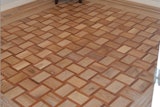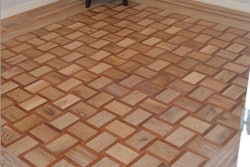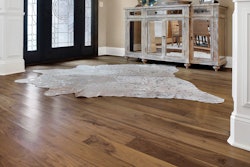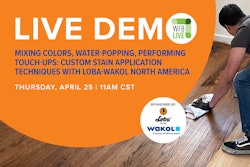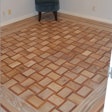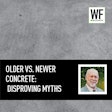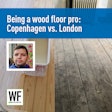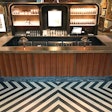The Problem
Recently, I received a call from one of our distributors. One of his customers, a wood flooring installer, had made a complaint regarding loose areas in a recently installed engineered wood floor.
The contractor stated that the directions for installing the wood were followed exactly. After the homeowner moved in, the floor's "loose" condition worsened. The flooring contractor felt that the situation was caused by an adhesive failure.
The Procedure
In this home, the wood was 3/8-inch-thick, 3-inch-wide, five-ply engineered plank installed over a concrete substrate. The installer stated that he had installed the wood the same way as he had in his previous engineered wood flooring installations.
The Cause
After arriving at the job site and visually inspecting the wood flooring, I began to inspect the substrate. I discovered that the substrate was a lightweight acoustical concrete product. The substrate was very dusty and seemed to have a loose, sandy texture.
Once the inspection was completed, it was evident that the adhesive was not the reason for the floor failure. The floor failed because the installer did not take into consideration the porosity of the substrate. It is my opinion that the floor failure was a result of the very porous and powdery surface of the subfloor. This is why the engineered wood flooring would not adhere to the substrate.
The adhesive was actually bonding to the powdery, flaky surface of the "slab." Once the family moved in and the floor was subjected to foot traffic, the flooring began to break free of the subfloor. The bond was broken due to the lack of integrity of the substrate.
Obviously, the failure was not caused by defective adhesive. The loose flooring resulted from an unstable substrate, which caused an inadequate bond and transfer of the adhesive.
How to Fix the Floor
To fix this problem, the wood flooring had to be removed and the substrate cleaned and vacuumed well. After cleaning the substrate, a primer/sealer for concrete floors was applied. The primer/sealer application filled in the pores of the substrate and made the subfloor stable enough for the installation. Once the primer/sealer had cured, new wood flooring could then be installed.
In the Future
With any type of wood flooring installation, it is important that the installer always check the substrate to determine if it is suitable for the wood floor and the installation method he plans to use.
In this case, there was a subfloor that was clearly inappropriate for a glued-down engineered floor.
If the substrate is not suitable, then the proper steps need to be taken to prepare the substrate for the flooring to be installed.
Every subfloor should be assessed before any flooring goes down. The subfloor must meet industry standards for soundness, flatness, moisture and pH levels. Time spent properly preparing a subfloor is a great investment in the success of any flooring installation. Never assume that all concrete is the same.
If there are any uncertainties about the substrate or the wood flooring regarding the correct installation procedures, it is important to contact the manufacturer for the proper procedures. Just about all manufacturers have a technical services department, and knowing the facts will save money and stress for all the parties involved.










